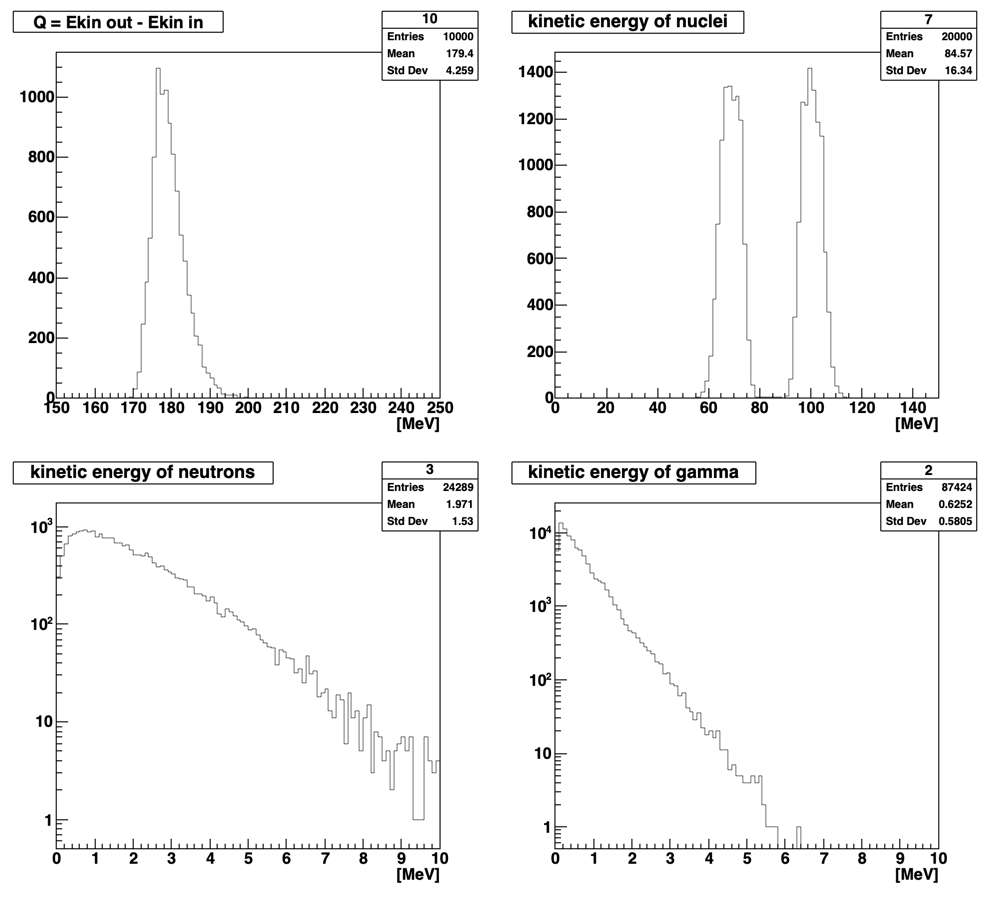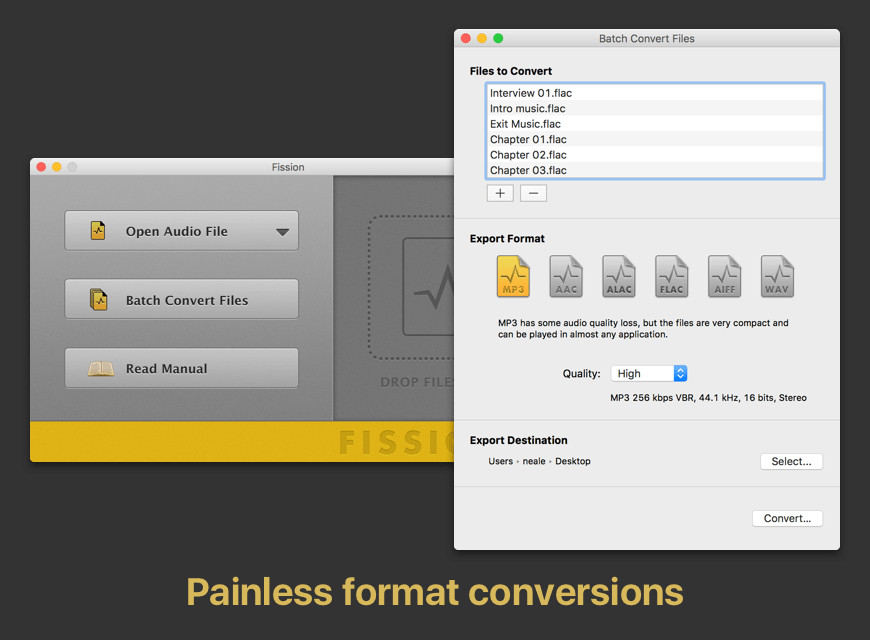
Fission for mac mac#
The scroller (if not a physical dial) on the new Mac mouse is handled by sliding your finger across the surface of the mouse.Wherever you click, the red playback cursor will be set, and will pl ay from that position when you hit the space bar (or click on the play icon below) Use the mouse to point and click on a specific area in your sound (in either the world view or the sound below), and use the scroller on the mouse to zoom in and out.Note the world view above, where you can see a frame around the area that you are zoomed in/viewing in the main view.

You can always click on the Play, Rewind and Fast-Forward buttons at the bottom to do these things, but skilled editors much prefer to use the keyboard's spacebar to start and stop playback, and manage locations of playback with the mouse instead of using the rewind and fast forward buttons.įission is a visual tool, so it is important to get a good handle on manipulating the view of content rapidly. The red vertical line in the waveform is the "cursor" and is the indicator of where playback will begin when you "play" it. This SAVE AS step above is a critical first step. NOTE: Fission is NOT and NLE nor a DAW - it is a destructive editing software, which allows direct file edits, and can only recover (or UNDO) what is in recent memory, and only as far back as the last SAVE. Always make a copy on the desktop before opening in editing software. Never open or edit files on our server.
Fission for mac software#
Never move a files into the trash or into/out of a folder while it is open in the Fission software or other editing tool.Generate a folder AFTERWARD, when you're ready to pack it up and save on our server for safe keeping, and desktop cleanup after your session. Always use the desktop for files in progress, in order to keep visual track of what you're doing while in session.and choose the Desktop as the save location. Use a new or add on moniker indicating that this is the EDITED version, like Draft 1, Edited, cut for Air, etc. which creates a copy, and leaves the original untouched. Immediately create a backup of your original source file by selecting on the menu File > Save As.

The Basics Managing Your Data aka Sound Files: Note the "Inspector" button at top right - clicking this will show or hide the summary information and labeling tools occupying the right side of the screen. Gaps and peaks in volume are useful indicators for where edits may be needed. Blank spaces are portions without sound, and the height of the yellow waveform image indicates the volume. The Waveform is a visual indication of sound along the timeline (above), and makes editing a snap. The WAV file will open and the waveform will display - shown here in yellow. Drag and drop your file into the Fission window at right labeled "Drop File Here" or use the "Open Audio File" option at left. Once opened, use Finder to locate your WAV file. Outline of Steps Start the Fission applicationįind the Fission icon on the dock at the bottom of the Mac window.

Re-arrange audio in a single file, copy audio from one file to another, or merge with a quick drag and drop. Remove unwanted content, such as commercials, from your audio file. It works with MP3, AAC, Apple Lossless and AIFF audio, enabling you to instantly trim and split files with no quality loss.


 0 kommentar(er)
0 kommentar(er)
